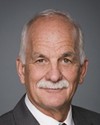Let me try to answer those to the extent I can, and I'll leave the rest to Mr. Head. There are a number of questions, about four or five, as I understand, that have been put.
The first question is on the difficulty of attempting to determine the cost of any piece of crime legislation. We went over that quite expansively in a prior committee hearing last week. It wasn't this committee; it was the procedure committee. If my learned friend actually wants to know the answers to the questions he's put, those same questions were put to his colleagues last week.
Let me give one clear example. My staff at Corrections, the commissioner, estimated that as a result of the Truth in Sentencing Act, there would be, by this time this year, an additional 1,300 or so new prisoners in the system. In fact, the number of prisoners is 500. Correctional Services diligently tried to determine exactly what the impact of legislation would be. There are all kinds of costing models. The question is not that they hadn't provided the information; the question is that it's often difficult, if not impossible, to make these kinds of determinations.
Similarly, trying to determine the cost of legislation.... For example, for my colleague, the justice minister, when it came to abolishing the faint hope clause--the elimination of the right to apply for parole after serving 15 years of a life sentence for murder--it was very difficult to determine what the cost would be 15 or 25 years down the road.

